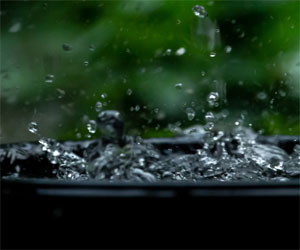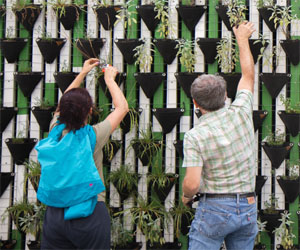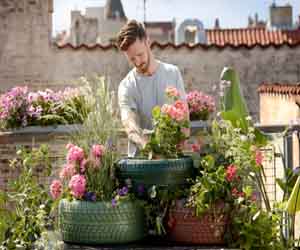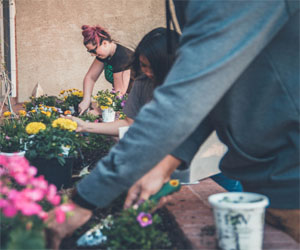


Nurturing Our Lifeline

Water, often referred to as the elixir of life, is an invaluable resource that sustains all living beings and ecosystems on our planet. As Earth's population continues to grow, urbanization expands, and environmental challenges loom, the importance of safeguarding and managing our precious water resources has never been more critical. This article delves into the significance of water resources, their essential role in our lives, and the measures necessary to ensure their sustainability.
The Vital Role Of Water Resources
Water is a fundamental element of life, with a multitude of crucial roles:
Human Survival: Water is essential for drinking, cooking, and sanitation. Access to clean and safe water is a fundamental human right, yet it remains out of reach for millions around the world.
Agriculture: Agriculture is the largest consumer of water globally. Crops and livestock rely on water for growth and sustenance, making it indispensable for food production.
Ecosystems: Aquatic ecosystems, from rivers and lakes to oceans, support biodiversity and help maintain the balance of nature. These ecosystems provide essential services such as water purification and flood regulation.
Industrial Processes: Industries depend on water for manufacturing and energy production. Water resources play a pivotal role in supporting economic activities and industrial growth.
Challenges Facing Water Resources
Despite the undeniable importance of water resources, they face several challenges:
Water Scarcity: Many regions worldwide are grappling with water scarcity, where the demand for water surpasses the available supply. This issue is exacerbated by population growth, urbanization, and climate change.
Water Pollution: Pollution from agricultural runoff, industrial discharges, and inadequate sanitation contaminates water sources, making them unsafe for consumption and detrimental to ecosystems.
Inefficient Water Use: Wasteful water practices in agriculture, industry, and households contribute to water stress and resource depletion.
Deteriorating Ecosystems: The degradation of aquatic ecosystems harms biodiversity and impairs the ability of natural environments to purify water and regulate local climates.
Safeguarding Our Precious Water Resources
To ensure the sustainability of our water resources, we must take proactive measures:
Water Conservation: Implement water conservation practices at the individual, community, and industrial levels. Fixing leaks, using water-efficient appliances, and reducing irrigation in landscaping are just a few examples.
Improved Water Management: Develop and adopt sustainable water management practices, including efficient irrigation systems in agriculture, responsible industrial water use, and water recycling.
Wastewater Treatment: Invest in advanced wastewater treatment technologies to purify water and safely return it to natural systems.
Riparian And Watershed Protection: Protect and restore riparian zones and watersheds to preserve the quality of water sources.
Education And Awareness: Raise public awareness about the value of water resources, and educate individuals about responsible water use and conservation.
Policy And Regulation: Governments and regulatory bodies should enact and enforce policies that promote responsible water management and protection of water sources.
Water resources are a cornerstone of life on Earth. As we confront challenges like water scarcity and pollution, it is our responsibility to cherish and safeguard these precious resources. By promoting sustainable practices, responsible management, and a collective commitment to water conservation, we can ensure that water remains a plentiful and life-nurturing force for generations to come. Protecting our water resources is not just a necessity; it is a moral and ecological imperative.
Cleaning Your Way To A Sustainable Future
 Non-Toxic Products: Green cleaning relies on cleaning products that are free from harmful chemicals and synthetic fragrances. These products are safer for your health and the environment.
Non-Toxic Products: Green cleaning relies on cleaning products that are free from harmful chemicals and synthetic fragrances. These products are safer for your health and the environment.
Reduced Environmental Impact: Green cleaning minimizes the use of harsh chemicals that can contaminate water systems and contribute to pollution. It also promotes the use of eco-friendly cleaning tools and practices.
Clean Indoor Air: Green cleaning products and methods focus on improving indoor air quality by avoiding the release of volatile organic compounds (VOCs) commonly found in traditional cleaning products.
Effective Green Cleaning Techniques
Natural Cleaning Solutions: Utilize natural ingredients like white vinegar, baking soda, lemon juice, and essential oils to create your cleaning solutions. For example, a mixture of vinegar and water can serve as an excellent all-purpose cleaner.
Reusable Cleaning Tools: Invest in high-quality reusable cleaning tools, such as microfiber cloths and mop heads. These tools effectively capture and remove dirt, dust, and allergens, reducing the need for disposable cleaning supplies.
Paving The Way To A Sustainable Future
 1. Electric Vehicles (EVs): Electric vehicles have gained significant popularity as a greener alternative to traditional gasoline and diesel-powered cars. EVs run on electricity stored in rechargeable batteries, producing zero tailpipe emissions. The adoption of electric cars is on the rise, thanks to advancements in battery technology, extended driving ranges, and the expansion of charging infrastructure. EVs significantly reduce carbon emissions, air pollution, and dependence on fossil fuels.
1. Electric Vehicles (EVs): Electric vehicles have gained significant popularity as a greener alternative to traditional gasoline and diesel-powered cars. EVs run on electricity stored in rechargeable batteries, producing zero tailpipe emissions. The adoption of electric cars is on the rise, thanks to advancements in battery technology, extended driving ranges, and the expansion of charging infrastructure. EVs significantly reduce carbon emissions, air pollution, and dependence on fossil fuels.
2. Hybrid Vehicles: Hybrid vehicles combine traditional internal combustion engines with electric propulsion systems. These vehicles can operate on electric power at low speeds and switch to the internal combustion engine at higher speeds or when additional power is needed.
Building Sustainable Communities For A Better Future

Low Environmental Impact: These communities strive to have a minimal impact on the environment. This often means eco-friendly construction, waste reduction and recycling, sustainable water management, and the use of renewable energy sources like solar panels or wind turbines.
Community And Connection: A strong sense of community is a hallmark of eco-villages. Residents often engage in decision-making processes together and foster a culture of shared responsibility. This sense of connection promotes social well-being and harmony.
Education And Learning: Many eco-villages emphasize learning and education, particularly in the areas of sustainability and eco-conscious practices. Workshops, seminars, and communal learning opportunities are common.
Cultural And Artistic Expression: Creativity and cultural expression often flourish in these communities, with residents embracing arts, music, and cultural activities that promote a sense of belonging and fulfillment.
Benefits Of Eco-Villages:
Environmental Stewardship: Eco-villages are on the forefront of environmental stewardship. By living in a sustainable, low-impact manner, residents reduce their ecological footprints and serve as models for sustainable living for the broader community.
Sustainable Living: These communities demonstrate that it is possible to live a comfortable and fulfilling life while minimizing environmental impact. They showcase the practicality of eco-conscious technologies and practices.
Strong Social Bonds: Eco-villages prioritize strong social bonds and a sense of community. Residents often share responsibilities, resources, and a commitment to a shared vision. This enhances the overall well-being of community members.
A Sustainable Future
 Defining Environmentally Friendly Homes
Defining Environmentally Friendly Homes
Environmentally friendly homes, often referred to as eco-friendly or green homes, are constructed and operated with a focus on reducing their impact on the environment. These homes adopt a holistic approach to sustainability, addressing various aspects of the building's design, construction, and operation. The goal is to minimize resource consumption, reduce energy usage, and limit greenhouse gas emissions.
Key Features Of Environmentally Friendly Homes
Energy Efficiency: Environmentally friendly homes prioritize energy efficiency through measures like well-insulated walls, roofs, and windows. They often incorporate high-efficiency heating and cooling systems and utilize energy-efficient lighting and appliances to reduce energy consumption.
Renewable Energy Sources: Many eco-friendly homes feature renewable energy sources such as solar panels, wind turbines, or geothermal heating and cooling systems. These technologies allow homeowners to generate their own clean energy and even feed excess energy back into the grid.
Water Efficiency: Water conservation is a critical component of environmentally friendly homes. Features like low-flow faucets, water-efficient appliances, and rainwater harvesting systems help reduce water consumption and lower utility bills.
Sustainable Materials: The construction of these homes often relies on sustainable and recycled materials, such as reclaimed wood, bamboo flooring, and recycled metal. This not only reduces the demand for new resources but also minimizes waste.
Indoor Air Quality: Environmentally friendly homes prioritize indoor air quality through the use of non-toxic and low-VOC (volatile organic compounds) paints and finishes.






Embracing Minimalism For A More Fulfilling Life
 3. Simplify Your Wardrobe
3. Simplify Your Wardrobe
A minimalist wardrobe typically consists of versatile, timeless pieces that can be mixed and matched. This not only makes getting dressed in the morning easier but also reduces the time and money spent on clothing. A smaller wardrobe can be more reflective of your personal style and eliminate the stress of decision fatigue.
4. Quality Over Quantity
In a world where we are often encouraged to buy more for less, minimalism emphasizes the importance of quality over quantity. Instead of opting for numerous inexpensive items, invest in high-quality products that are built to last. This not only reduces waste but also leads to a more cost-effective and satisfying life in the long run.
5. Mindful Consumption
Minimalism promotes mindful consumption. Before making a purchase, think about whether the item aligns with your values and needs. Consider whether it will enhance your life or merely contribute to clutter. Being mindful of what you bring into your life can lead to more intentional and fulfilling choices.
6. Reduced Environmental Impact
By living with less and consuming mindfully, minimalism can have a positive impact on the environment. Reducing waste, conserving resources, and making eco-friendly choices are intrinsic to this way of life, which ultimately contributes to a more sustainable planet.
7. Increased Time And Freedom
Living with less not only simplifies your surroundings but also frees up time and mental space. With fewer possessions to manage, you have more time to focus on what truly matters - your relationships, experiences, and personal growth.
The Power Of Gardening Communities
 2. Problem Solving: When faced with a gardening challenge, whether it's a mysterious pest infestation or a stubborn weed problem, being part of a gardening community means you have a network of fellow gardeners to turn to for solutions. Together, members can brainstorm ideas and offer practical advice.
2. Problem Solving: When faced with a gardening challenge, whether it's a mysterious pest infestation or a stubborn weed problem, being part of a gardening community means you have a network of fellow gardeners to turn to for solutions. Together, members can brainstorm ideas and offer practical advice.
3. Seed And Plant Swaps: Gardening communities frequently organize seed and plant swaps. These events are excellent opportunities to acquire new and interesting plant varieties and share your own surplus plants with fellow gardeners. Such swaps promote diversity and provide access to rare and heirloom plants.
4. Collaboration: In some gardening communities, members collaborate on group projects or communal gardens. These shared spaces allow for the cultivation of larger and more diverse gardens than what individual gardeners might achieve alone. Collaborative efforts can result in flourishing, bountiful gardens that benefit everyone involved.
5. Social Interaction: Gardening is a solitary activity for many, but being part of a gardening community can alleviate the isolation. Whether you're participating in a local club's meetings or engaging in online discussions, these interactions offer the chance to connect with like-minded individuals who share your passion for plants and the outdoors.
6. Garden Tours And Events: Gardening communities often organize garden tours and events where members can visit one another's gardens, exchange ideas, and celebrate each other's successes. These events can be a source of inspiration and an opportunity to appreciate the beauty of different gardening styles.
7. Mentorship: Experienced gardeners within a community often take on mentorship roles, guiding newcomers in the art and science of gardening. Mentorship fosters a sense of continuity and tradition, passing down knowledge from one generation of gardeners to the next.